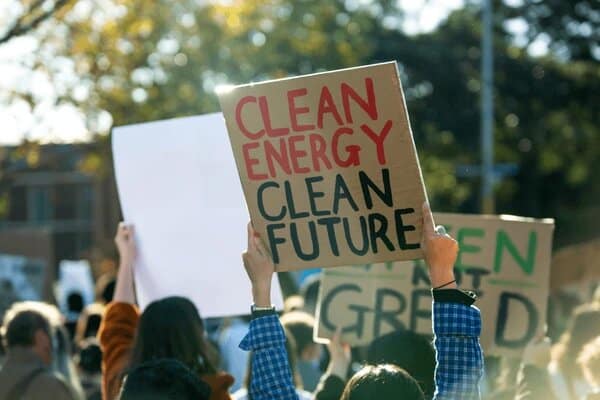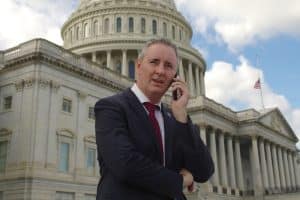PennEnvironment Research & Policy Center and Evergreen Action have released a new interactive map that highlights federal clean energy investments in Pennsylvania.
The map tracks renewable energy projects across the state that utilize federal funds from the Inflation Reduction Act (IRA), allowing users to see the businesses, houses of worship, and public buildings pursuing projects ranging from installing solar panels and increasing energy efficiency to monitoring air quality and planting trees.
“Federal investments are fueling growth in local industries, creating new jobs, and laying the groundwork for long-term prosperity,” said Julia Kortrey, Deputy State Policy Director of Evergreen Action. “Pennsylvanians deserve an affordable, clean energy future, and these funds are making that future a reality.”
The release also provides Pennsylvanians interested in switching to clean energy alternatives with a “clean energy home toolkit,” a resource guide on how to use rebates and tax incentives from the IRA. In the first year after the IRA’s implementation of tax credits for individuals, businesses, and nonprofits, 160,000 Pennsylvanians saved more than $260 million.
“With these tax credits and incentives there’s never been a better time to go solar or get a heat pump or [electric vehicle],” said Ellie Kearns, PennEnvironment’s Climate and Clean Energy Advocate. Although up-front costs can be high, the incentives and credits available in the clean energy home toolkit can greatly reduce the costs of switching to renewable energy. At the same time, energy efficient upgrades will “pay for themselves” in the long run, “especially as utility bills continue to rise,” added Kearns.
The tools provided by PennEnvironment and Evergreen indicate reasons for optimism regarding the future of clean energy in Pennsylvania. According to PennEnvironment Deputy Director Flora Cardoni, “Pennsylvania has an immense, largely untapped opportunity when it comes to clean energy. And we have the technology to build a clean energy future today.” Cardoni pointed to data from the National Renewable Energy Laboratory showing that, if Pennsylvania continues to pursue clean energy projects, the state has the technical potential to generate five times its electricity demand in 2020 from the sun and 15% of its annual electricity demand from the wind.
Currently, however, Pennsylvania lags behind other states in growing renewable energy generation. For example, while Pennsylvania increased clean energy production by 57 percent between 2015 and 2024, it ranked 49th out of the 50 states by percent increase in total solar, wind and geothermal generation during that period. By contrast, neighboring states including New York, New Jersey, Maryland, and Ohio greatly outperformed the Commonwealth in increasing their generation of solar power.
There is, however, a plan in the pipeline which would help bring Pennsylvania back on par with its neighbors. In April, Governor Shapiro unveiled his Lightning Plan, a six-part legislative package which would “put the Keystone State on the path towards a new, cleaner energy future.” The various pieces of legislation contained in this plan would require utility companies supplying electricity in Pennsylvania to get 35 percent of their power from renewable energy sources by 2035, streamline the process to approve new clean energy projects, create programs to help Pennsylvanians switch to solar power and lower pollution, and create more tax breaks and incentives for switching to renewable energy.
READ: Pennsylvanians Won Important Victories for Clean Energy and the Environment in 2024
Polling shows that there is widespread bipartisan support in Pennsylvania for increasing renewable energy production. According to a poll conducted by Global Strategy Group in 2024, 93 percent of Democrats, 84 percent of independents, and 59 percent of Republicans support increasing the use of wind and solar energy.
The use of federal tax credits and incentives to promote a transition to clean energy, including those deployed under the IRA, enjoys even broader support. Another 2024 poll showed that “87 percent of Americans support federal incentives to deploy solar and energy storage, including 78 percent of 2020 Trump voters.”
Despite this bipartisan support, federal tax credits and incentives are on the chopping block during the ongoing congressional budget negotiations. “If the tax credits are repealed,” said Kearns, “we expect that many individuals, businesses, and non-profits will slow or even stop their efforts to install solar, buy EVs, [or] switch to heat pumps because the price becomes out of reach for at least the near future.”
In addition, the Trump administration is attempting to claw back congressionally approved grants distributed under the IRA to state and local governments, businesses, and farmers. If these efforts are successful, many of the projects illuminated in this new interactive map will likely be cancelled.
“There is some grant money that has already been dispersed and even used already, but there are also grants that have been paused or even attempted to be rolled back,” said Kearns. “The Shapiro administration has been suing so that Pennsylvania gets the money that it was allocated, but the fate of a lot of this funding is still murky and unknown.”
READ: In His First 100 Days, Trump Launched an ‘All-Out Assault’ on the Environment
Red states and congressional districts have benefitted the most from the IRA since its passage: More than 110 major clean energy and clean vehicle factories and other projects are in development or have already broken ground in the southeastern states. Twenty-one house Republicans, including Reps. Ryan Mackenzie and Rob Bresnahan from Pennsylvania, have signed onto a letter asking congressional leaders not to repeal tax credits, but the future of these clean energy incentives remains uncertain.
PennEnvironment advocates have urged a call to action for Pennsylvanians who want to protect clean energy investments. “Pennsylvanians … should call their Congressmember and Senators and ask them to maintain all clean energy and energy efficiency tax credits, rebates, and incentives so those who want to can choose clean energy,” said Kearns.
Cardoni added that residents should also urger theur state lawmakers to pass Gov. Shapiro’s Lightning Plan and “prioritize other policies that would increase the amount of clean, renewable energy like wind and solar in the state and that would improve energy efficiency and conservation.”






